Covid-Won't-Stop-Us Research Festival

Schedule
Here's our initial schedule. We'll try to stick to it, but we're also trying to be friendly and informal.
- We'll start with live presentations, 10 minutes each, followed by 2 minutes for Q&A.
- After that, we'll have time for one-on-one discussions via private chat, or by Zoom breakout rooms.
| When | Who | From | What |
|---|---|---|---|
| 3:00 | Hosts: Tanu and Peter | CDM | Welcome |
| 3:02 | Dean Miller | CDM | Welcome |
| 3:05 | Daniela Raicu | AP Res. | Collaboration - A Catalyst and Driver for Success |
| 3:10 | Amber Settle | CDM | Evaluating a Process for Teaching Debugging to Novices |
| 3:22 | Len Jason & Jacob Furst | CSH & CDM | Prospective Study of Young Adults During a COVID-19 Epidemic |
| 3:34 | Sharief Oteafy | CDM | Managing Big Sensed Data |
| 3:46 | Mark Potosnok | CSH | What goes up must come down? Air quality during the Chicago Shutdown |
| 3:58 | Dimuthu Arachchige | CDM | Modeling and Validation of Continuum Snake Locomotion |
| 4:10 | Beck-Winchatz, McMahon, & Berardi | CSH | Possible NSF ITEST Collaboration between CSH, CDM and CAA |
| 4:22 | Yele Adelakun | CDM | E-health Satisfaction for Patient and Providers |
| 4:34 | Adam Steele | CDM | Optimizing Heuristic Evaluations |
| 4:45 | e-Posters |
e-Posters Presenters
| Eli Brown | Interactive Machine Learning for Gene Module Discovery in Transcriptomics |
| Priya Deshpande | Biomedical Data Integration and Indexing System |
| Jonathan Grey | Application of Evolutionary Algorithms for Snake Robot Gait Generation |
| Peter Hastings | Fake News! |
| Daneih Ismail | Detecting Anxiety in an e-Learning system For English as a Second Language |
| Ronan Johnson | An Improved Avatar for Automatic Mouth Gesture Recognition |
| Iyad Kanj | On Clustering Incomplete Data |
| Tim Sheehan | Legged Locomotion of Soft Modular Quadruped: Trajectory Generation and Validation |
| Yiyang (Ian) Wang | Deep Learning for Explainable Computer-Aided Diagnosis |
| Dolores Wilber | Intimacy at the Apogee |
Presentations
Collaboration - A Catalyst and Driver for Success
 Daniela Raicu, Associate Provost for Research
Daniela Raicu, Associate Provost for Research
Interests: Visual Computing, Data Mining, Computer-aided Diagnosis, Learning Analytics, and Research in General
Evaluating a Process for Teaching Debugging to Novices
Amber Settle, CDM
 Bio: Amber Settle is a Professor in the School of Computing at DePaul University and has been on the fulltime faculty since 1996. Her research interests include computer science and information technology education and theoretical computer science. She has served on the Advisory Board for the ACM Special Interest Group for Computer Science Education (SIGCSE) since 2010 and is the immediate SIGCSE past chair.
Bio: Amber Settle is a Professor in the School of Computing at DePaul University and has been on the fulltime faculty since 1996. Her research interests include computer science and information technology education and theoretical computer science. She has served on the Advisory Board for the ACM Special Interest Group for Computer Science Education (SIGCSE) since 2010 and is the immediate SIGCSE past chair.
Abstract: Debugging code is an important but complex task, one with which students typically struggle. In this project we developed a debugging process for novice programmers based on the scientific method. The process is designed to focus student attention on the symptoms of a bug and to help them use those symptoms to generate a hypothesis about the cause of a bug. We analyzed student responses when using our process on three programming tasks, finding that while they are able to generalize from a single failing test case they are much less able to identify the appropriate location or actual fix.
Prospective Study of Young Adults During a COVID-19 Epidemic
Leonard Jason and Jacob Furst
 Abstract: Our group recently collected baseline psychological and biological data on 4,501 college students between the years of 2014 and 2018. In the current pilot proposed study, we hope to recontact 1,064 of these participants between June 1, 2020 and May 1, 2020, and assess their current behavioral and mental well-being through on-line survey questionnaires. Identification of risk factors predisposing patients to developing COVID-19 may help uncover underlying mechanisms of disease. In our prospective study, we hope to compare their baseline data collected five years ago to current behavioral functioning, depression, and anxiety for those after contracting COVID-19 as well as those who did not contract COVID-19. Additionally, machine learning via latent class analysis, will be utilized to assess both effective and adverse coping strategies employed by participants with an without COVID-19. These results could in the future be used to identify predisposing characteristics of those who develop COVID-19, and to create informed mental health treatments that could assist with the psychological recovery of young adults after exposure to COVID-19. We hope to use this pilot data to submit a NIH grant to assess possible predisposing behavioral and cytokine network differences among participants who develop COVID-19.
Abstract: Our group recently collected baseline psychological and biological data on 4,501 college students between the years of 2014 and 2018. In the current pilot proposed study, we hope to recontact 1,064 of these participants between June 1, 2020 and May 1, 2020, and assess their current behavioral and mental well-being through on-line survey questionnaires. Identification of risk factors predisposing patients to developing COVID-19 may help uncover underlying mechanisms of disease. In our prospective study, we hope to compare their baseline data collected five years ago to current behavioral functioning, depression, and anxiety for those after contracting COVID-19 as well as those who did not contract COVID-19. Additionally, machine learning via latent class analysis, will be utilized to assess both effective and adverse coping strategies employed by participants with an without COVID-19. These results could in the future be used to identify predisposing characteristics of those who develop COVID-19, and to create informed mental health treatments that could assist with the psychological recovery of young adults after exposure to COVID-19. We hope to use this pilot data to submit a NIH grant to assess possible predisposing behavioral and cytokine network differences among participants who develop COVID-19.
Managing Big Sensed Data
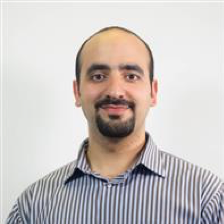 Sharief Oteafy, CDM
Sharief Oteafy, CDM
Bio: Sharief Oteafy (SM’IEEE) is an Assistant Professor at the School of Computing, DePaul University, USA. He received his PhD in 2013 from Queen’s University, Canada, focusing on resource management in Next Generation Sensing Networks. His current research focuses on dynamic architectures for interoperability in the Internet of Things, Information Centric Networks, and managing the proliferation of Big Sensed Data (BSD). He is currently a key player in the design of the Tactile Internet Architecture, under the development of the IEEE P1918.1 Standard Working Group, where he is now the secretary of the WG. He is actively engaged in the IEEE Communications Society (ComSoc), and is a professional member in both IEEE and ACM. Dr. Oteafy co-authored a book on "Dynamic Wireless Sensor Networks", published by Wiley, presented 50+ publications and delivered multiple IEEE tutorials on IoT and BSD. He co-chaired a number of IEEE symposia and workshops, and served on the technical program committee of numerous IEEE and ACM symposia. He is currently an Associate Editor with IEEE Access, and on the editorial board of Wiley’s Internet Technology Letters.
What goes up must come down? Air quality during the Chicago Shutdown
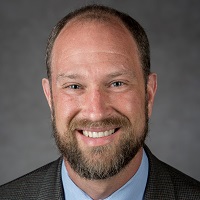 Mark Potosnak, CSH
Mark Potosnak, CSH
Bio: Associate professor and chair of Environmental Science & Studies at DePaul University, Dr. Mark Potosnak has degrees from Harvard and Columbia Universities, and he was a fellow in the Advanced Study Program at the National Center for Atmospheric Research. His research focuses on interactions between the plants and air quality. Specifically, he studies how trace gas emissions from plants affect atmospheric chemistry and how climate change will impact this interaction in the future. His field studies have been conducted in temperate, tropical, urban, arid and tundra ecosystems. Dr. Potosnak also deploys low-cost air quality sensors to engage citizen scientists and to explore how spatial patterns of air quality within Chicago are related to socioeconomic drivers.
Abstract: Many heavily polluted cities and regions throughout the world showed remarkable improvements in air quality due to reductions in mobile source emissions during lockdowns. Examples include China, where air quality measured by satellite displayed sharp reductions and visibility in India, where the Himalayan range was visible for the first time in decades from some urban areas. Chicago has shown surprisingly modest or no reduction in some metrics. One hypothesis advanced by the Chicago Tribune is that emissions are dominated by the fleet and long-haul transportation hubs in Chicago, and these continued to function. Initial results from both EPA monitors and the NSF-funded Array of Things network will explore these patterns.”
Modeling and Validation of Continuum Snake Locomotion
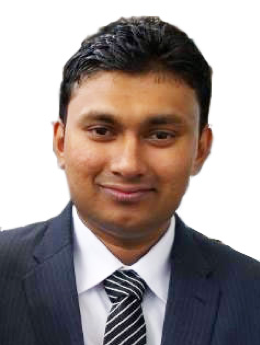 Dimuthu Arachchige
Dimuthu Arachchige
Bio: Dimuthu Arachchige joined with the Robotics and Medical Engineering (RoME) Laboratory, College of Computing and Digital Media in September 2019 as a Ph.D. student. He presently works in the area of soft continuum robotics.
Abstract: We propose a soft robotic snake that has more degree of freedom and deformation capabilities than the state-of-the-art. Snakes are amazingly successful creatures we can find everywhere. Their success has much to do with their ability to locomote in different kinds of terrains. A robot like a snake can be used in applications such as search and rescue, surveillance, underwater explorations, archeological explorations, etc. We show that our prototype robot can validate complicated types of snake gaits such as serpentine and rolling motion.
Possible NSF ITEST Collaboration between CSH, CDM and CAA
Bernhard Beck-Winchatz, Susan McMahon, and Luciano Berardi, CSH
 Bio1: Bernhard Beck-Winchatz is a Professor in the College of Science and Health with a joint appointment in the Department of Physics and Astrophysics and the Department of STEM Studies. As the interim director of the CSH STEM Center, he is interested in issues related to student retention and success, facilitating STEM education research, faculty professional development and collaborations with external organizations.
Bio1: Bernhard Beck-Winchatz is a Professor in the College of Science and Health with a joint appointment in the Department of Physics and Astrophysics and the Department of STEM Studies. As the interim director of the CSH STEM Center, he is interested in issues related to student retention and success, facilitating STEM education research, faculty professional development and collaborations with external organizations.
Bio3: Luciano Berardi is the Director for TRiO Programs and Access Research at DePaul University. He also serves as an affiliate faculty member at DePaul’s Community Psychology Ph.D. and MS programs at DePaul University. Working at the Center for Access and Attainment (CAA), he focus on issues of educational access and retention, oversee the TRIO and Mitchem fellowship programs and directs the CAA Lab. His research focus educational transition of underrepresented groups, mentoring in academia, and issues of disparities in education.
Abstract: A group of faculty in the College of Science and Health, in collaboration with the Center for Access and Attainment, is working on developing initiatives focused on K-12 outreach, STEM college and career pathways, and student success. As part of this effort, we are seeking external funding through the NSF, Howard Hughes Medical Institute, Spencer Foundation and other agencies. Because career pathways are intertwined, we believe that CDM and CSH collaborations can enhance and increase opportunities for our students. As an example, we will discuss a possible collaboration on an NSF ITEST proposal. Beyond this immediate opportunity, our goal is to lay the foundation for collaborations between the two colleges.
E-health Satisfaction for Patient and Providers
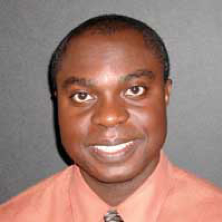 Yele Adelakun, CDM
Yele Adelakun, CDM
Interests: E-Health / Telemedicine
Optimizing Heuristic Evaluations
Adam Steele, CDM
 Interests: Dr. Steele's area of interests are in HCI, Software Engineering, BioInformatics and Grid Computing.
Interests: Dr. Steele's area of interests are in HCI, Software Engineering, BioInformatics and Grid Computing.
Bio: Dr. Steele holds a Ph.D. in Computer Science from Concordia University in Montreal, Canada. He comes to DePaul with several years industry experience, having worked at Rockwell Collins, as a Principal Investigator on the ARL Advanced Displays Fedlab, and as a Section Leader in their Advanced Technology Center. Before that, Dr. Steele worked at M3i Systems in Montreal as a Software Specialist.
Abstract: Heuristic evaluation is an inspection method that has the goal of finding User Experience (UX) problems in a system. In this work we interviewed a number of UX experts and developed more concrete heuristics for each of Jakob Nielsen’s 10 heuristics. We also developed a framework, Coherent Heuristic Evaluation (CoHE) to support non-expert evaluators doing a Heuristic Evaluation (HE). Our ultimate goal is to democratize HE so that more systems can have some kind of UX evaluation.
e-Posters
(Click on Title to see poster. Click on name for email.)
Eli Brown, Interactive Machine Learning for Gene Module Discovery in Transcriptomics, (Slides, Handout)
 Bio:
Eli T. Brown is an Assistant Professor in the College of Computing and Digital Media (CDM) at DePaul University. He earned his B.A. from Cornell University in Computer Science and Math, and his Ph.D. and M.S. in Computer Science from Tufts University. His teaching is focused in the Data Science Program, where he teaches data visualization and machine learning. His research revolves around integrating the two disciplines together for more effective data analytics. He directs the Laboratory for Interactive Human-Computer Analytics (LIHCA, @ lihca.io), which develops new interactive machine learning technology to address the needs of collaborators in a variety of fields including biomedical, biotechnology and journalism.
Bio:
Eli T. Brown is an Assistant Professor in the College of Computing and Digital Media (CDM) at DePaul University. He earned his B.A. from Cornell University in Computer Science and Math, and his Ph.D. and M.S. in Computer Science from Tufts University. His teaching is focused in the Data Science Program, where he teaches data visualization and machine learning. His research revolves around integrating the two disciplines together for more effective data analytics. He directs the Laboratory for Interactive Human-Computer Analytics (LIHCA, @ lihca.io), which develops new interactive machine learning technology to address the needs of collaborators in a variety of fields including biomedical, biotechnology and journalism.
Abstract: In understanding the immune system, our collaborator seeks to understand how the front-line cells, macrophages, work. They must see not only the overall genome, which is static, but how the cell works. One way to examine this is a snapshot of the cell's activity based on the proteins it is producing. Transcriptomics is a field that offers exactly this potential, but produces massive, noisy data. Machine learning has been a helpful tool to the biotech community, but it requires significant supervision from a well-trained human. The human-in-the-loop analytics approach applies machine learning algorithms behind the scenes in interactive visual interfaces, so that the domain experts can explore their data and develop insights with the benefits of machine learning, without having to develop separate expertise.
Interests: Visual Computing, Data Analysis, Human Computer Interaction
See also: Laboratory for Interactive Human-Computer Analytics
Priya Deshpande, Biomedical Data Integration and Indexing System
Abstract: In this poster presentation, we are focusing on data integration of biomedical data, how researchers can share and reuse this data with fine-grained access control to this heterogeneous biomedical data. We are aiming to design multimodal, federated, temporal data integration system with unique identifier to datasets, where user can access and merge data without knowing any internal details about system. Our proposed system – Data integration and indexing System (DiiS) will provide data sources discovery and reproducibility. We focused on addressing challenges in clinical data management for data driven research. We are planning to use FAIR (Findable, Accessible, Interoperable, and Reusable) principles to deploy data integrated system to the world.
Jonathan Grey, Application of Evolutionary Algorithms for Snake Robot Gait Generation
Abstract: We create a snake model in a previously created python physics simulation environment. We use the environment and an evolution module for python to allow the simulated soft-bodied robotic snakes to learn how to move.
Peter Hastings, Fake News! (The password is: 0G#?^B20)
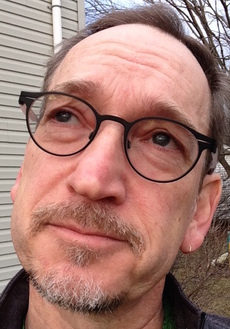 Bio: Peter has been at CDM since 2001. He does research in Artificial Intelligence in Education, Natural Language Processing, and Serious Games. His classes are mostly in Human Computer Interaction and AI, with a little Neuroscience and Cognitive Science thrown in.
Bio: Peter has been at CDM since 2001. He does research in Artificial Intelligence in Education, Natural Language Processing, and Serious Games. His classes are mostly in Human Computer Interaction and AI, with a little Neuroscience and Cognitive Science thrown in.
Abstract: FakeNews! is meant to be an educational game that trains players to be better consumers of information. The project should contribute to research in both Educational Games and in Deep Natural Language Understanding. In the game, the player will be "employed" by a nefarious agency, tasked with creating fake news items that can be posted on social media in order to disrupt elections. Players will be trained in different techniques for altering facts, improving (hopefully) their ability to recognize other examples of fake news. Natural Language Understanding will be used to identify the methods that players use to alter the facts, and to judge the quality of their fake news items. Principles of Serious Game design will be used to develop game prototypes that provide the motivation necessary for players to exert the mental effort required for learning. The game will be evaluated to see how well it supports learning of this critical skill compared to other teaching methods. During the summer, an enormous number of relevant publications were collected, and some directions for future development were plannned, but I ran into a major philosophical wall: How can you teach people about fake news, when a primary purveyor of it is calling everything else fake news?
Daneih Ismail, Detecting Anxiety in an e-Learning system For English as a Second Language
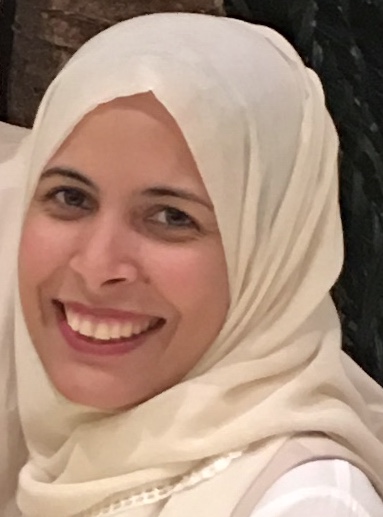 Bio: I am a PhD student at CDM. I am working with Professor Peter Hastings. My research interest is reducing foreign language anxiety within an intelligent tutoring system.
Bio: I am a PhD student at CDM. I am working with Professor Peter Hastings. My research interest is reducing foreign language anxiety within an intelligent tutoring system.
Abstract: Foreign language anxiety (FLA) plays a critical role in learning a foreign language. Detecting FLA is the first step to reduce and eventually overcome it. In this work, we present a novel design to detect FLA using sensor-free and sensor-lite metrics. The sensor-free metrics discover FLA without using any sensor. While sensor-lite metrics use minimal sensor such as self-report.
Ronan Johnson, An Improved Avatar for Automatic Mouth Gesture Recognition
Abstract: Machine learning algorithms such as neural networks can aid researchers in annotating large corpora of sign language reference videos. However, neural networks require large amounts of training data and are sensitive to the unbalanced classes present in the corpora. We've developed an improved model for extended facial capabilities on our avatar in order to generate synthetic data to improve predictive accuracy on minority classes.
Iyad Kanj, On Clustering Incomplete Data
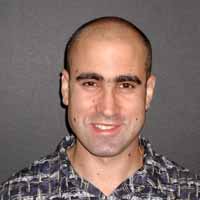 Interests: parameterized complexity, graph theory and algorithms, combinatorial optimization, computational geometry, and bioinformatics.
Interests: parameterized complexity, graph theory and algorithms, combinatorial optimization, computational geometry, and bioinformatics.
Abstract: We study fundamental clustering problems for incomplete data. In this setting, we are given a set of incomplete d-dimensional Boolean vectors (representing the rows of a matrix), and the goal is to complete the missing vector entries so that the set of complete vectors admits a partitioning into at most k clusters with radius or diameter at most r. We give tight characterizations of the parameterized complexity of these problems with respect to the parameters k, r, and the minimum number of rows and columns needed to cover all the missing entries.
Mirtha Lucas, A Transfer Learning Model for Identification of Biomarkers in Chest X-Rays of COVID19 Patients
Abstract: We use a transfer learning technique applied to a pretrained VGG19 neural network to build a deep convolutional model capable of detecting four possible conditions from chest x-ray images: Normal (healthy), Bacteria, Virus (not COVID19), and COVID19. Then we use the state of the art Grad-CAM technique to identify the location of biomarkers for the detected condition in the image.
Tim Sheehan, Legged Locomotion of Soft Modular Quadruped: Trajectory Generation and Validation
Abstract: This research presents, for the first time, the methodology for generating advanced locomotion gaits for soft modular robots. The soft quadrupedal legged robot is comprised of five, tentacle-like soft modules that can bend in any direction. Utilizing inverse kinematics, trajectories of soft limbs were derived for three types of discontinuous gait and trot gait locomotion. Static stability, reverse locomotion, and turning features were analyzed. The results are tested on an accurate, physics-based complete model of the hardware prototype. Results show that the generated trajectories are stable and perform as expected.
Yiyang (Ian) Wang, Deep Learning for Explainable Computer-Aided Diagnosis
Abstract: In the presentation, we will present how we can use different Convolutional Neural Networks (CNNs) architectures to detect age related degeneration (AMD) in OCT images and lung cancer in Computed Tomography images. In addition, we will show how visual explanations can be derived from deep networks via Gradient-based Localization.
Links:
Dolores Wilber, Intimacy at the Apogee
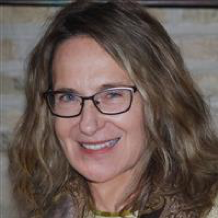 Interests: Design, Cinema Production, Directing
Interests: Design, Cinema Production, Directing
Abstract: This is an introduction to my research on the Pandemic Quarantine. https://www.daysofquarantinepandemic.com/
Research Links
- URC Collaborative Research Grants Program
- Provides grants for faculty teams across academic units.
- CDM Collaborative Research Grants
- Summer funding for
- Currently funded CDM projects
- From teaching Computer Science to Documentary filmmaking to Robots and more!
Organizers
| Tanu Malik | Peter Hastings |
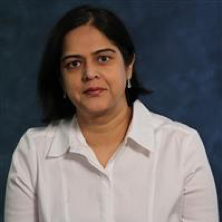 |
 |
and the CDM Research and Scholarship Environment Committee
Participants
(Click on names to send email.)
Also: Betty Shanahan, Associate Vice President for Administration & Operations